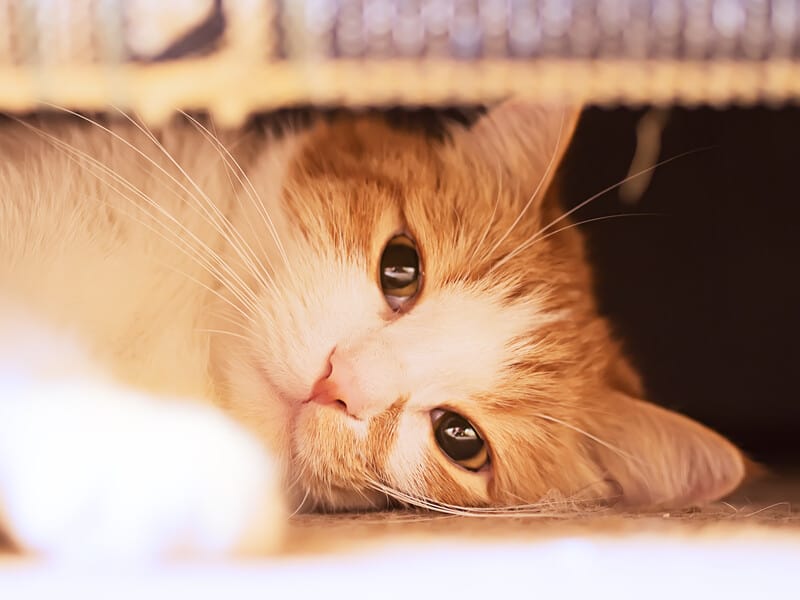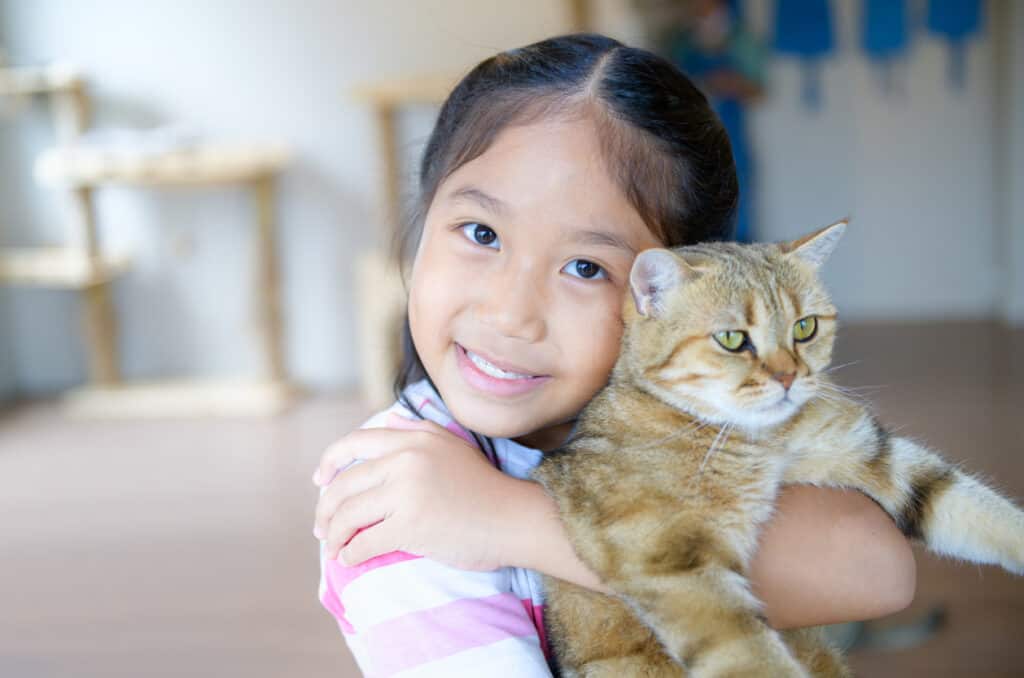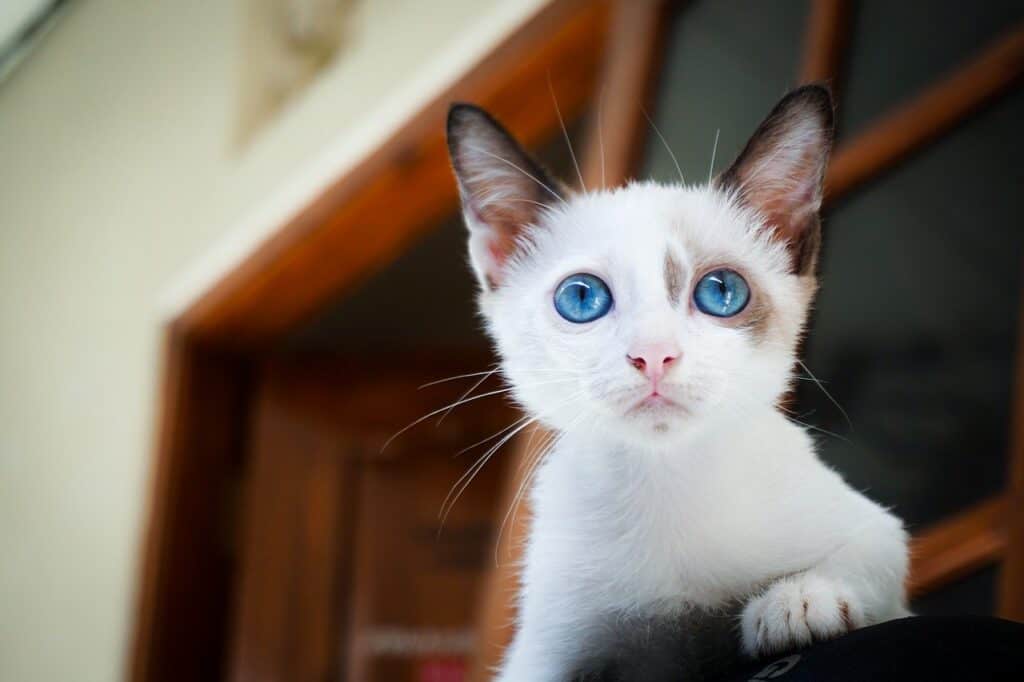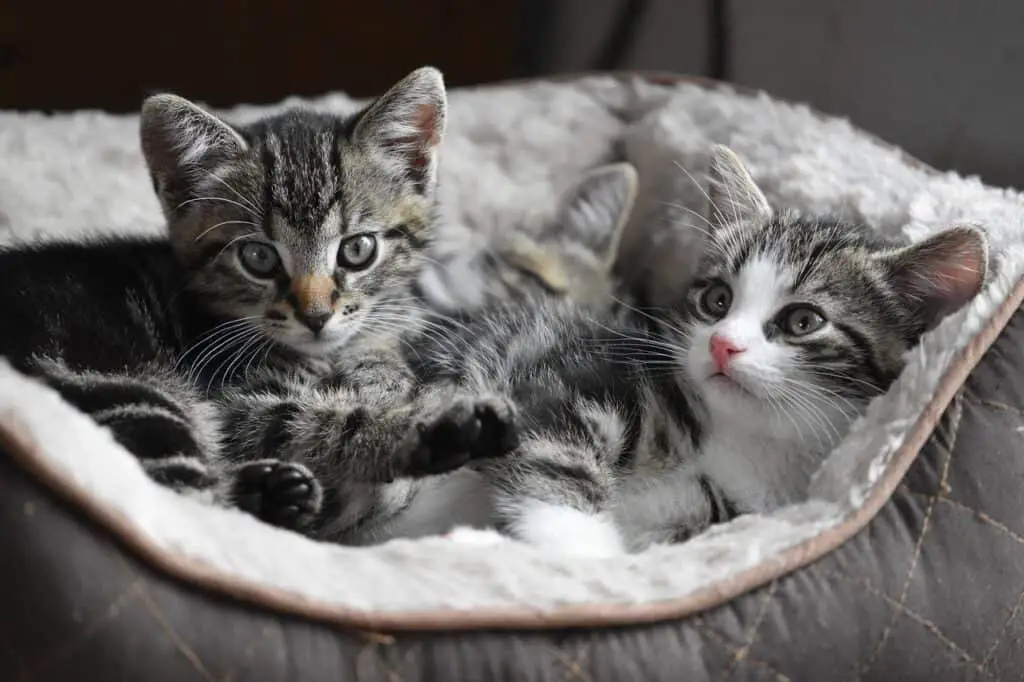We’ve all seen the funny cat crying memes online. It’s impossible not to get sentimental when we see a picture of a sad kitten with tears in its eyes. But how likely is this to happen in real life? Are cats able to cry from sadness or shed tears?
Cats can cry tears, but not caused by emotion as in humans. A cat’s tears are a mechanism that responds to physical stimuli from the environment, such as strong smells. Allergies or diseases can also cause watery eyes in cats.
This doesn’t mean that cats are incapable of feeling emotions, it just means that they don’t cry when they are in pain or distress.
According to scientists, we seem to be the only species that shed emotional tears; most animal tears are more of a physical defense mechanism.
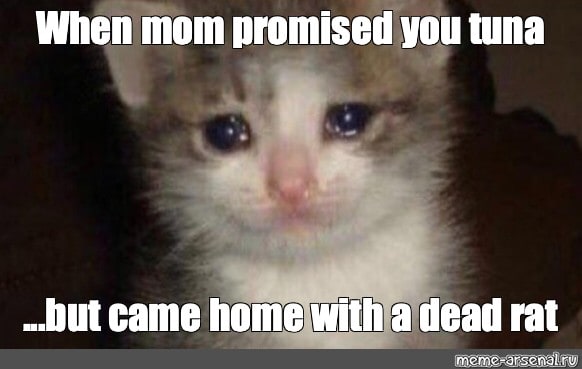
Why and how do cats cry?
Cats, like most animals, cry after getting in contact with certain physical stimuli. These tears serve as a way to protect the eyes from the world.
This works the same way as for us. For example, think about when you peel an onion or when you get dust in your eyes. Our eyes get watery for protection and to flush out any impurities.
So, when you see a crying cat with real tears, there is either something in its environment that’s causing this defense mechanism or it could be a sign of an infection.
Here are some of the most common reasons that explain why cats cry:
- Allergies
- Dust in the environment
- Chemicals
- Infections
- Conjunctivitis
- Irritation
- Upper respiratory infections
- The tear ducts are clogged
Should you be concerned?
If you notice your cat with teary eyes, it’s likely that something in the air or its environment is triggering it. If it’s incidental, there is no concern for worry.
However, if it’s something that happens regularly, there might be a reason for concern.
It could either be something in your cat’s environment that is causing an allergic reaction or there might be a medical cause.
Start by checking if the condition could be caused by any change you made recently. Did your cat get a new bed, a new toy, or was something else introduced that could cause allergies?
Another cause could be detergent or cleaning agent that you used to wash your cat’s blanket or clean the floors. In that case, stop using it and see if the situation improves
Some cats can have food allergies, which can cause tears to form. If you think your cat has an allergy, please consider going to a veterinarian.
Do cats experience emotions?
Cats can experience a range of different emotions and can display them using various mechanisms such as vocalizations eye contact, or in other non-verbal ways. They’re also good at recognizing emotions in humans and are even able to recognize animal and human facial expressions.
People who learn how to read cats’ emotions can develop a better relationship with their cats.
But just because cats feel a wide array of emotions, that doesn’t mean they can cry tears of emotion.
We have evolved to shed tears for social reasons. This emotional response is uniquely human. However, in the animal kingdom, tears serve just the purpose of protecting and cleaning its owner’s eyes and keeping them lubricated.
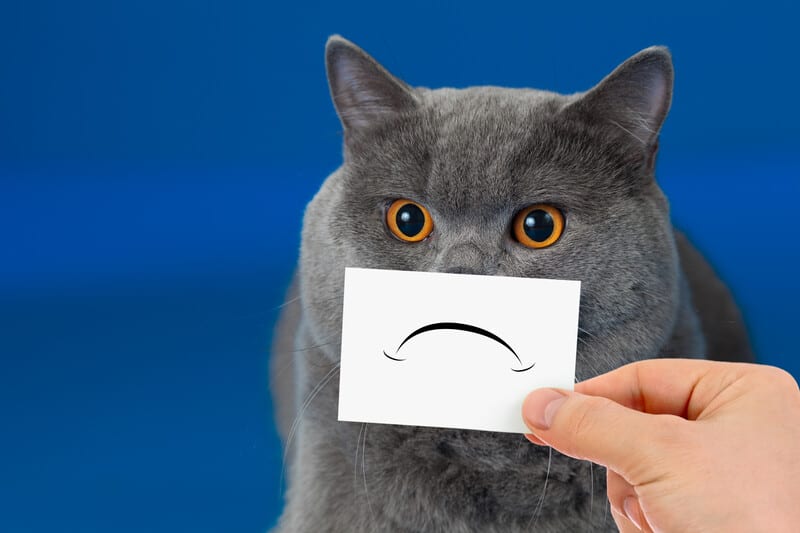
How do cats express emotions?
Cats are unique creatures with different ways to express their emotions. But how do they show their feelings? Here are some examples:
- Sadness in cats: An unhappy cat will vocalize less, will be less energetic, will hide more, and can lose appetite. Cats can suffer from depression; if this happens, paying attention to their body language will help to diagnose it.
- Joy in cats: A happy or relaxed cat will purr, play, become affective, blink slowly, and rub against you.
- Anger or fear in cats: Enraged, stressed, or frightened cats are hard to ignore. They will be evasive, will hiss, arch their backs, and will do loud vocalizations.
How do cats express sadness?
Now that we know that cats don’t cry when they are sad, how would you recognize a sad cat?
If you believe your cat is sad, you might want to take a look at some of the tell-tale signs listed below
- Changes in appetite (eats more or eats less)
- Gets angry or scared
- Changes in vocalization (meows more or meows less)
- Tucked tail
- Either a minimum of grooming or excessive grooming
- Ears pulled back
- Staying hidden
- Excessive scratching
- Sleeping more than usual
When seeing any of those behaviors, try to find out what is making your cat sad and what you can do to help.
Cats are very emotional creatures, even if they don’t always show it. They need our love and compassion and are very much dependent on their human parents for their survival and happiness.
Can cats cry from pain or happiness?
Cats don’t cry from pain, happiness, or sadness. Humans are the only species that shed tears for emotional reasons. Cats have other ways to express how they are feeling.
The most common way to express discomfort is by doing vocalizations. To be precise, experts claim that cats use vocalizations to express discomfort to humans; they don’t meow at each other that often.
So if your cat is in pain or trying to tell you something, it’s unlikely they’ll cry; they’ll meow at you.
Do cats purr when they feel pain or happiness?
Cats are widely known for purring when they feel happy or relaxed. But did you know that they purr for other reasons or that there are different kinds of purrs?
Karen McComb, a behavioral ecologist at the University of Sussex in Brighton, U.K., conducted a study on cats purring. She concluded that 75% of the volunteers were able to identify when a cat was soliciting food through purr and when it was just a relaxation purr. It turns out that when cats demand something, they use a high-pitch cry, identical to a human baby, which is why we identify it.
But the hungry purr isn’t the only purr; cats purr when they’re in pain too. Why? Well, it seems that purring helps them relieve pain and heal faster. So sick cats or cats that are in pain will purr to express pain.
Why is my cat crying?
Now that we have established that cats don’t shed tears, it doesn’t mean that they cannot express emotion using sound.
Cats can cry in their own ‘cat-way’ and it can be very discomforting to hear. They can cry by yowling and making high-pitched noises. For non-cat owners, every meow is identical. But for the trained ear, meows can have different meanings.
Cats cry for several reasons. Some studies explain how cats have up to 21 vocalizations to express how they feel! Some of the reasons why cats cry are the following:
- Sadness or grief
- Loneliness and attention-seeking
- They’re soliciting food
- Pain or stress
- Mating purposes
When cats are feeling down, they can emit low-pitched meows. If you notice your cat meowing more or less than usual or in different ways, something might be wrong.
Is it normal for kittens to cry?
If you’ve ever owned a kitten, you know vocal they can be. Kittens tend to cry more than adult cats because they need help and constant attention.
When kittens cry, they’re usually calling their mother because they’re cold, hungry, or feel lonely. So if there’s a kitten crying, there’s a great chance they’re calling their mother for help.
Do cats cry as they age?
Aging is another factor that affects the number of vocalizations a cat does. Senior cats can suffer from several conditions that can affect them mentally and physically.
Old cats can lose their hearing or sight abilities. Those conditions make them prone to experience feline cognitive dysfunction and make them feel disoriented. Physical pain in their body or legs can also make senior cats cry more.
If you notice that your senior cat is crying more than usual, it’s time to give the vet a visit and see if they’re OK.

